Brella® SweatControl Patch

In April 2023, the U.S. FDA cleared for use the Brella® SweatControl Patch for the treatment of primary axillary hyperhidrosis in adults over the age of 18 (use for anyone under 18 would be off-label). Brella was created by Candesant Biomedical, Nashville, TN.
Important update as of June 2025: Candesant Biomedical, the company behind Brella, is currently in the process of being sold. As a result, there are no Brella sales representatives available at this time, and access to the product is impacted. We will provide updates as more information becomes available.
The patch is oval-shaped to fit the underarm. It contains pure metallic sodium with zero aluminum. The patch itself is, according to its manufacturer, a "very standard, medical-grade adhesive patch."
Learn more - watch our new "Ask Me Anything" video all about Brella with guest Niquette Hunt, Candesant CEO.
Brella is cleared to be applied by a healthcare provider in a clinical setting for approximately 3 minutes per underarm (no more than 3 minutes but, depending on the patient, treatment could take less than 3 minutes) and works via targeted alkali thermolysis (TAT). TAT technology is based on the scientific principle that heat is generated when sodium meets water. The result is that when the Brella patch is applied to the underarm, there’s an interaction between the water in sweat and the sodium in the patch to generate a targeted amount of heat, causing microthermal injury to the sweat glands that inactivates those glands for a period of time. The patch is noninvasive and no pain control or anesthesia is required prior, during, or after its use.
Forty-eight hours (or more) before Brella treatment, it's recommended that patients shave their underarms. In the office, prior to patch application, providers should ensure skin is dry. Once applied, the patch works through the interaction of its sodium with the water in sweat that begins to come out of the sweat glands. To stimulate sweating, if needed, Candesant provides clinicians with a number of tips. Patients report that, during Brella treatment, they feel: "tingling," "prickles" or "pins and needles." The entire in-office visit to give Brella treatment for both underarms is expected to take about 20 minutes. Results usually become apparent 3 to 5 days after treatment and last 2 to 4 months.
The FDA’s clearance of Brella is based on data from SAHARA (NCT04599907), a randomized, double-blind, sham-controlled, multicenter pivotal study that included 110 adult patients with primary axillary hyperhidrosis. Patients had baseline Hyperhidrosis Disease Severity Scale (HDSS) scores of 3 or 4, which showed that excessive sweating frequently or always interfered with their daily lives. Patients then received bilateral treatment with Brella or with a sham patch for up to 3 minutes on each underarm. Afterward, patients were evaluated weekly for 12 weeks post-treatment, with responders followed for up to 24 weeks post-treatment.
Primary endpoints of the SAHARA study included the occurrence of adverse events and skin reactions following patch treatment (2-week time frame) and achievement of an HDSS score of 1 or 2 (4-week time frame). Key secondary endpoints included a mean improvement in quality of life and the proportion of treated subjects with at least 50% improvement in Gravimetric Sweat Production (GSP) from baseline to 4 weeks. Eligible patients were aged 22 years or older with GSP greater than 50mg per axilla.
Brella was well tolerated among patients with no reported serious or severe adverse events. There were no lasting side effects, and any side effects were transient and went away on their own. Data from the SAHARA study was presented in a late-breaking oral presentation at the 2023 American Academy of Dermatology Annual Meeting.
The Brella study results “are exciting,” says Dr. David Pariser, professor at the Eastern Virginia Medical School Department of Dermatology and founding member of the International Hyperhidrosis Society (IHhS) “because they demonstrate consistent, statistically significant, and clinically meaningful improvements across the measured hyperhidrosis parameters.”
Depending on regulations in different U.S. states, Brella treatment may be provided by a physician, physician assistant, nurse practitioner or nurse.
Candesant created a MyBrella.com clinician finder for patients to use and for Brella-providing practitioners to join as well as a mailing list for updates on Brella's rollout. Given that Candesant is being sold, it is not, however, clear how up-to-date or maintained the clinician finder or mailing list is at this time.
How much does it cost? Niquette Hunt, CEO Candesant said she expected practices would charge about the same for one session with the patch as they would for a high-end, in-office facial or chemical peel. But, there can be additional office visit costs, etc. IHhS spoke with one aesthetic practice in Texas that indicated they would provide Brella for a total cost of about $350. This is, of course, just one example and not indicative of widespread pricing.
Hunt predicted that it would take a few years before Brella became available outside the U.S.
Can Brella be used on other sweaty body areas beyond the underarms? Some experts hint there may be off-label potential for the use of Brella on different body parts.
Research and References
See the below links for relevant scientific research. More hyperhidrosis-related publications can be found here.


